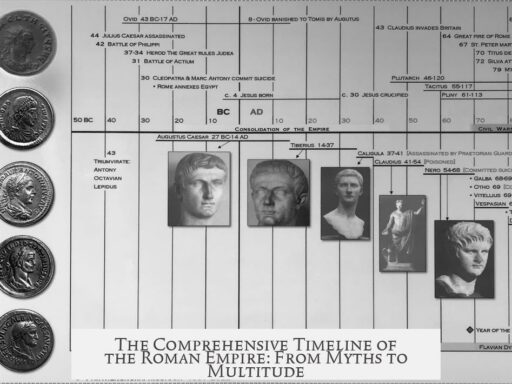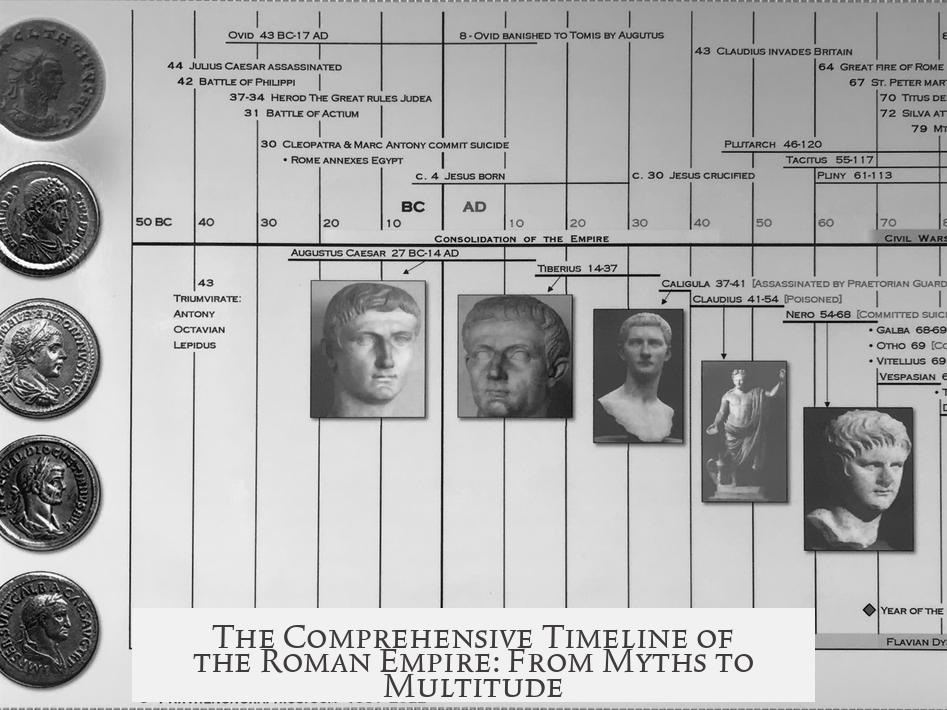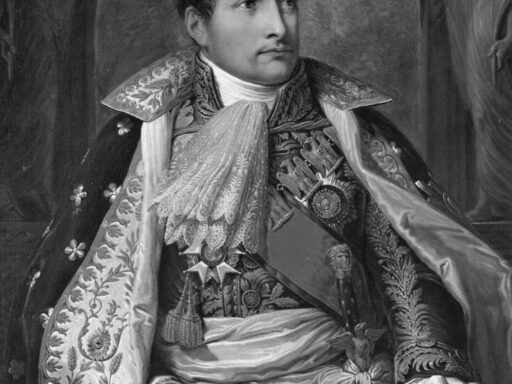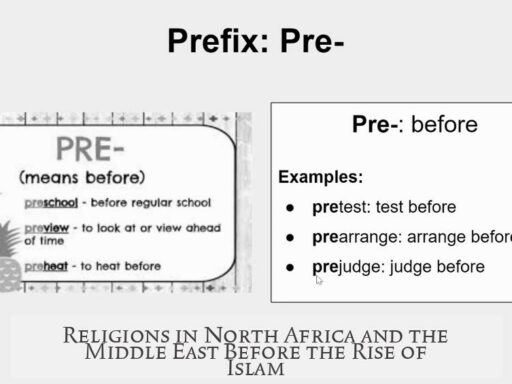The time-span of the Roman Empire extends from 27 BC, when Augustus established it, until the fall of the Eastern Roman Empire, or Byzantine Empire, in 1453 AD. Its history spans over fourteen centuries marked by formation, expansion, division, and transformation.
Roman history before 300 BC is largely mythological and uncertain. The traditional founding date of Rome, 753 BC, is not historically verified and originates from legends like Romulus and Remus. The early period included a monarchical phase lasting about 250 years, followed by the establishment of the Roman Republic around 509 BC, though its precise development is debated. Reliable records become more consistent only after approximately 400 BC.
Between roughly 400 BC and 146 BC, Rome transitioned from a regional power to a dominant Mediterranean force. Around 400 BC, Rome was a modest city fostering regional influence. Over the following century, continuous warfare expanded its territories in Italy. In the 3rd century BC, Rome engaged conflicts with Greek colonies and confronted Pyrrhus of Epirus, which gave rise to the term “Pyrrhic victory.”
This era saw rivalries escalate, particularly with Carthage during the Punic Wars. Rome’s military campaigns included devastating battles against the Carthaginian general Hannibal. The eventual destruction of Carthage in 146 BC, along with the sacking of Corinth the same year, symbolized Rome’s emergence as a Mediterranean superpower. Conquering Greece further cemented this status.
Despite this dominance, the period up to 27 BC remained a republic. The Roman Republic governed vast territories across Spain, Anatolia, and beyond. However, challenges surfaced due to the republican system, which aimed to prevent excessive individual authority. Military success became a pathway to political power, intensifying internal conflicts.
In the 1st century BC, these tensions culminated in civil wars and prominent figures emerged. Julius Caesar, born around 100 BC, significantly expanded Rome’s territory through violent campaigns. His appointment as dictator for life alarmed many senators, leading to his assassination in 44 BC. After ensuing civil wars, his heir Octavius (Augustus) assumed control, marking the official start of the Roman Empire in 27 BC. Augustus adopted the title “first citizen” rather than emperor, reflecting Roman aversion to kingship.
The empire flourished for about two centuries under relatively stable governance and peace, sometimes called the Pax Romana. However, structural issues eventually destabilized Rome. Power struggles prompted reforms including a multi-emperor system to better manage vast territories. Emperor Constantine notably established Constantinople (modern Istanbul) as a new imperial capital.
In 285 AD, Emperor Diocletian formally divided the empire into Western and Eastern halves. The Western Roman Empire gradually lost territory and collapsed politically by 476 AD. However, the Eastern Roman Empire, known as the Byzantine Empire, continued for almost a thousand years, preserving Roman law and culture.
During Justinian’s reign (6th century AD), the Byzantine Empire briefly regained some western territories, including parts of Italy and North Africa. Despite these gains, the empire eventually focused on defending its eastern borders before falling to the Ottoman Turks in 1453 AD, marking the end of Roman rule.
| Period | Approximate Date | Key Events |
|---|---|---|
| Early Rome (Myth and Kings) | c. 753 BC–509 BC | Legendary founding, monarchy, establishment of Republic (unconfirmed) |
| Roman Republic Expansion | c. 400 BC–27 BC | Rise in Italy, Punic Wars, conquest of Greece, internal turmoil |
| Roman Empire Established | 27 BC onwards | Augustus’ reign begins, Pax Romana, territorial expansion |
| Empire Division | 285 AD | Split into Eastern and Western Empires |
| Western Empire Collapse | 476 AD | Loss of western territories, fall of Rome |
| Byzantine (Eastern Roman) Empire | 476 AD–1453 AD | Continuation of Roman legacy in East, Constantinople, gradual decline |
The Roman Empire’s timeline is complex. It blends myth, republic politics, and imperial shifts. The empire’s identity transitioned yet was continuous through its eastern successor. This vast timeframe reflects Rome’s evolution from city-state to enduring civilization.
- Rome’s founding myths date to 753 BC but lack firm evidence before 300 BC.
- Roman Republic ruled extensive territories before empire formation in 27 BC.
- The empire lasted roughly 1,500 years, split between Western and Eastern halves.
- The Western Empire fell in 476 AD; the Byzantine Empire continued until 1453 AD.
- Constantinople’s foundation marked key imperial evolution under Constantine.
Unraveling the Time-Span of the Roman Empire: From Myth to Multitude
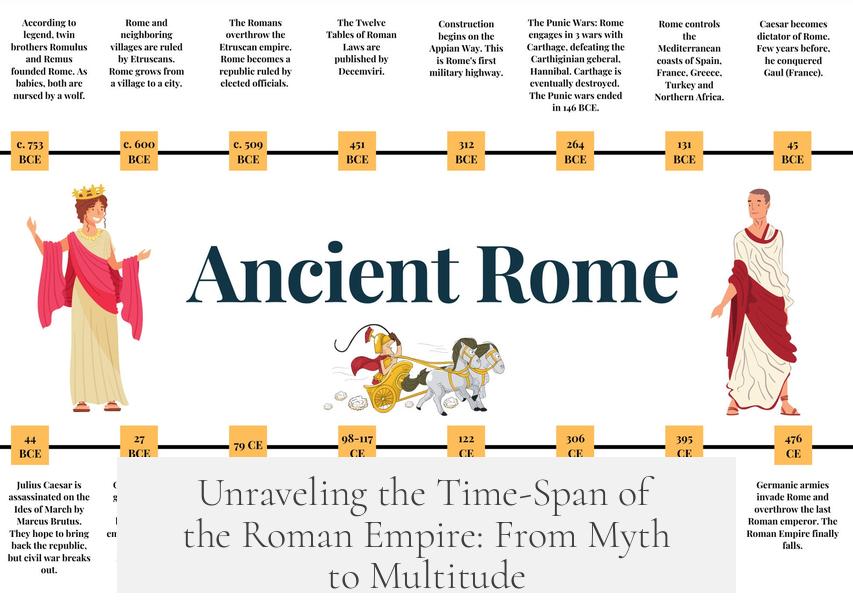
How long did the Roman Empire actually last? To get a proper grip on this colossal question, you must first swallow a couple of surprising facts. You see, the timeline of the empire isn’t as cut-and-dry as the schoolbooks made it seem. Rome’s history stretches from fuzzy legends to ironclad empires and multipolar rule that would confuse any modern CEO. Let’s dive in, and along the way, you might just find that the Roman Empire’s “time-span” is part fact, part story, and a dash of political genius.
Before the Empire: Myths and Early Shadows (Pre-300 BC)
Let’s start where the story is sketchiest—before 300 BC. Most people want a firm date like “753 BC,” the legendary year Romulus and Remus founded Rome. But guess what? Romans themselves often disagreed on that date. It wasn’t a date your average Roman iPad user would quote at trivia night. The founding myths float between legend and guesswork. So, for practical purposes, historians often shrug and say, “Let’s not sweat the pre-300 BC stuff.”
The early 250 years under kings—is that real history or more myth? The story goes from seven kings to the Republic’s birth in 509 BC, but again, this timeline is murky. In fact, some scholars suggest the Republic took its more familiar shape only around the mid-4th century BC. The takeaway? Before solid records and laws, Rome was still finding its feet.
Rome’s Rise to Power: Warfare and Expansion (400 BC–146 BC)
By 400 BC, Rome grew from a modest city to a regional powerhouse. It spent the next hundred years slowly but steadily dominating Italy. By 300 BC, Rome was ready for global Mediterranean fame—but not without bloodshed.
Here’s a headline for you: Rome was basically at war for the next two centuries. It started with local fights igniting bigger conflicts. In 280 BC, Rome tangled with Greek colonies in southern Italy. The Greeks called in their muscular ally Pyrrhus of Epirus, and that’s how we got “Pyrrhic victory”—winning but losing so much it hardly feels like a win.
Then came Carthage, Rome’s arch-nemesis in a series of Punic Wars. The second century BC climaxed with Rome ruthlessly obliterating Carthage, a brutal move immortalized in ancient history. Around the same time, Rome toppled Greece’s grip on power. By 146 BC, after sacking Carthage and Corinth, Rome’s status cemented: full-on superpower.
The Roman Republic as an Empire (Up to 27 BC): When Republic Means Empire
Here’s a curveball. Rome ruled vast lands far beyond their city walls and was widely called an empire, even though it was still a republic. No emperors yet, just a bunch of politically savvy senators and generals jockeying for dominance.
The system was designed to prevent any single person from holding too much power. But in practice? Military victories translated directly into political clout. The genius (and trouble) lay in constant wars boosting generals’ fame.
Enter Julius Caesar, born exactly in 100 BC, whose conquests plunged Europe into turmoil. He managed to crown himself dictator for life—forget the “no kings here” foundation myth—and earned a jab in the Senate: his assassination in 44 BC.
Following the chaos, his heir Octavius snatched control in the civil war’s aftermath. By 27 BC, he stepped into the spotlight as Augustus Caesar, Rome’s first emperor, even though he preferred the title “first citizen.” This marks the official start of the Roman Empire.
Imperial Glory and Transition (27 BC Onwards)
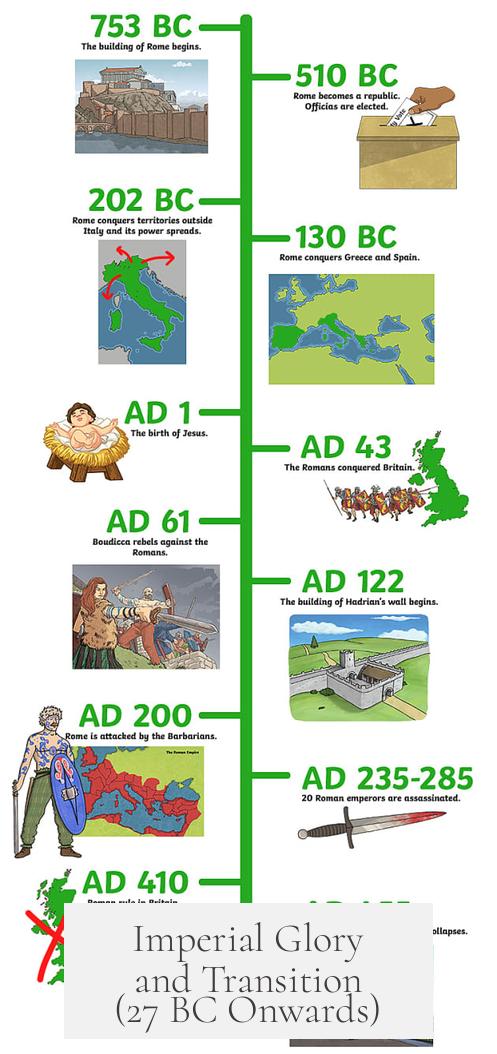
So, yes, the Roman Empire officially begins in 27 BC under Augustus. From here, the empire enjoys two centuries of relative peace and prosperity, called the Pax Romana. It’s quite the contrast to the nonstop warfare of the Republic’s wars.
But after those golden years, Roman fortunes take a turn. Political turmoil isn’t going anywhere and leads to complex power sharing with multiple emperors and the founding of new capitals.
One major player? Constantine the Great, who built the city of Constantinople (today’s Istanbul) on the ruins of Byzantium, a strategic move signaling shifting center of power.
Dividing the Empire and Its Survival Drama
Eventually, ruling the sprawling empire as a single entity became tricky. Rome experimented with a multi-emperor system to cover more ground.
The famous “fall” of the Western Roman Empire? It’s more complicated than “it collapsed.” Essentially, Rome lost grip over its western territories, including its original capital. Meanwhile, the Eastern Roman Empire, arguably the true continuation of Rome, thrived as what we now call the Byzantine Empire.
At times, like under Emperor Justinian in the 6th century, the Roman Empire even managed to temporarily reclaim lost western lands. But these victories were fleeting, adding a fascinating layer to Rome’s winding timeline.
Putting It All Together: What’s the Roman Empire Time-Span Then?
If we define the Roman Empire strictly as the period from Augustus’s rise in 27 BC to the traditional date marking the West’s fall in 476 AD, we get roughly a 500-year run. But that’s just half the story.
Add in the myth-clouded pre-Republic centuries, the Republic’s unofficial empire phase (roughly 300 BC to 27 BC), and the surviving Byzantine realm that lasted until 1453 AD, and suddenly “Roman Empire” stretches over two millennia.
That’s right—depending on your criteria, the Roman Empire’s time-span could be anything from 500 years, to over 2,000 years. This massive range underscores something crucial: history isn’t always black and white. Definitions matter.
Why Does This Matter Today?
Understanding this time-span offers perspective on governance, empire-building, and how civilizations evolve. People often expect a neat timeline—start, rise, fall—but Rome teaches us that empires morph and endure in surprising ways.
Next time you hear about Rome, ask: Are we talking founding myths? Republic wars? Augustus’s empire? Eastern survival? Each tells a different chapter of a sprawling story, full of human ambition, myth, conquest, and reinvention.
Some Questions to Chew On
- Does empire always have to mean a single ruler or can it be a complex system like Rome’s multi-emperor approach?
- How do legends shape our view of history, especially when concrete facts are scarce?
- What lessons can we take from Rome’s longevity and adaptability in politics and military strategy?
History buffs, politicians, or just curious minds—Rome’s time-span offers not just dates but a deep dive into power, myth, and survival. And if nothing else, it shows that sometimes history’s timelines are more about *stories* than *stamps on paper*.
